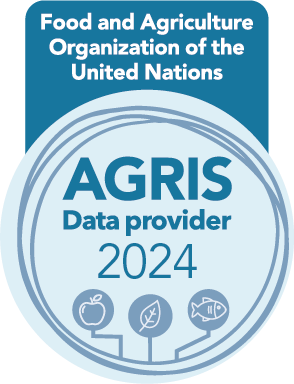Archiving Indigenous technical knowledge (ITK) based ethnomedicinal practices among tribal communities in the Nilgiris: A perception analysis
DOI:
https://doi.org/10.14719/pst.5088Keywords:
constraints, knowledge, perception, PVTGs, traditional medicineAbstract
Ethnomedical practices of the tribal community in the Nilgiris district were documented and analyzed to assess their knowledge and perception of Indigenous Technical Knowledge (ITK) and to understand the constraints faced in utilizing the same. This study, in doing so, presents a discussion of the interface of socioeconomic variables with indigenous traditional knowledge to highlight the determinants that facilitate the retention and transmission of traditional medicine knowledge in these communities. The present study adopted an exploratory research design. Data were collected from six tribal communities through snowball sampling, with a total of 120 respondents in two blocks of the Nilgiris district. While analyzing the relationships, the socio-economic characteristics were correlated with the knowledge levels and constraints on traditional medicinal practices. Some of the other tools that were applied to these studies included rank-based quotients and multiple regression analysis. Findings indicate that a major section of the tribal population has a medium to low level of knowledge of ITK, with perception varying due to age, income, and information availability. Superstitions, extraction of scientific principles involved in allopathic science, and most of all, lack of interest shown by the younger generation are major factors inhibiting the spread of the practices. Diagnosing these challenges with specified community engagement strategies, education, and access to traditional medicine is thus the highway to sustaining this invaluable cultural heritage. The research suggests a holistic approach to conserve ITK and traditional medicine by marrying modern healthcare with traditional practices to maintain their relevance for posterity.
Downloads
References
Kotegouder RS. Documentation, awareness and usage of indigenous knowledge about medicinal plants. [Doctoral dissertation]. University of Agricultural Science, Dharwad; 2002
Warren DM. Indigenous agricultural knowledge, technology and social change. Sustainable agriculture in the American Midwest: lessons from the past, prospects for the future. Urbana: University of Illinois Press; 1994. 35–53.
Lev E. Ethno-diversity within current ethno-pharmacology as part of Israeli traditional medicine–A review. Journal of Ethnobiology and Ethnomedicine. 2006 Dec;2:1–2. https://doi.org/10.1186/1746-4269-2-4
Muthu C, Ayyanar M, Raja N, Ignacimuthu S. Medicinal plants used by traditional healers in Kancheepuram district of Tamil Nadu, India. Journal of Ethnobiology and Ethnomedicine. 2006 Dec;2:1–0. https://doi.org/10.1186/1746-4269-2-43
Macía MJ, García E, Vidaurre PJ. An ethnobotanical survey of medicinal plants commercialized in the markets of La Paz and El Alto, Bolivia. J Ethnopharmacol. 2005 Feb 28;97(2):337–50. https://doi.org/10.1016/j.jep.2004.11.022
Gandhimathi S. Social policies and programmes for tribal development in Theni district. Int J Adv Res. 2016;4:1680–85. https://doi.org/10.21474/IJAR01/1379
Senthilkumar K, Gobalakrishnan C. Urbanization and social status among irular tribal women: A situation analysis in Dharmapuri district of Tamil Nadu. Stud in Indian Place Names. 2020;40:161–66.
Ministry of tribal affairs Ministry of Tribal Affairs - Government of India
Shankar R, Manimaran S. Socio-economic conditions of Pachamalai tribes. Cognitive Discourses. 2013;1:112–18.
State of India's Livelihoods Report. 2022 (SOIL-Report-final_web-version.pdf (livelihoods-india.org))
Kumar MM, Pathak VK, Ruikar M. Tribal population in India: A public health challenge and road to future. J Family Med Prim Care. 2020 Feb 1;9(2):508–12. https://doi.org/10.4103/jfmpc.jfmpc_992_19
Census Report 2011, Government of India. Retrieved from www.censusindia.gov.in
https://egyankosh.ac.in/bitstream/123456789/69330/1/Unit-4.pdf
NILGIRIS-FINAL.pdf (vkp-tnrtp.org)
Statistical Profile of Scheduled Tribes in India. Ministry of Tribal Affairs. Statistics Division, Government of India; 2013.
Stebbins RA. Exploratory research in the social sciences. Thousand Oaks, CA: SAGE Publications, Inc.; 2001 May 14. https://doi.org/10.4135/9781412984249
Heinrich M. Ethnopharmacology in the 21st century-grand challenges. Front Pharmacol. 2010 Jun 28;1:2159. https://doi.org/10.3389/fphar.2010.00008
Nakata M. Indigenous knowledge and the cultural interface: Underlying issues at the intersection of knowledge and information systems. International Federation of Library Associations and Institutions J. 2002 Oct;28(5-6):281–91. https://doi.org/10.1177/034003520202800513
Goodman LA. Snowball sampling. The Annals of Mathematical Statistics. 1961 Mar 1;148–70. https://doi.org/10.1214/aoms/1177705148
Mbongwa NS. The perceptions, attitudes and knowledge of traditional healers and traders about using cultivated plants in South Africa [Doctoral dissertation]; 2018
Singh AK, Kisku U. A review on custom hiring services under Indian conditions: farmer’s perception, associated factors, constraints and suggestions. Asian J Agric Ext Econ Sociol. 2022 Sep 26;8–27. https://doi.org/10.9734/ajaees/2022/v40i111680
Nisha A, Vimalrajkumar N. Constraints of Attappadi tribal livestock farmers: A rank based quotient analysis. Indian J Soc Res. 2019 Sep 1;60(5):721–31. https://doi.org/10.5455/ijlr.20190604113451

Downloads
Published
Versions
- 18-03-2025 (2)
- 02-03-2025 (1)
How to Cite
Issue
Section
License
Copyright (c) 2025 B M Pooja, N Anandaraja, C C Fernandaz , P Balasubramaniam , R G Selvi

This work is licensed under a Creative Commons Attribution 4.0 International License.
Copyright and Licence details of published articles
Authors who publish with this journal agree to the following terms:
- Authors retain copyright and grant the journal right of first publication with the work simultaneously licensed under a Creative Commons Attribution License that allows others to share the work with an acknowledgement of the work's authorship and initial publication in this journal.
- Authors are able to enter into separate, additional contractual arrangements for the non-exclusive distribution of the journal's published version of the work (e.g., post it to an institutional repository or publish it in a book), with an acknowledgement of its initial publication in this journal.
Open Access Policy
Plant Science Today is an open access journal. There is no registration required to read any article. All published articles are distributed under the terms of the Creative Commons Attribution License (CC Attribution 4.0), which permits unrestricted use, distribution, and reproduction in any medium, provided the original author and source are credited (https://creativecommons.org/licenses/by/4.0/). Authors are permitted and encouraged to post their work online (e.g., in institutional repositories or on their website) prior to and during the submission process, as it can lead to productive exchanges, as well as earlier and greater citation of published work (See The Effect of Open Access).









